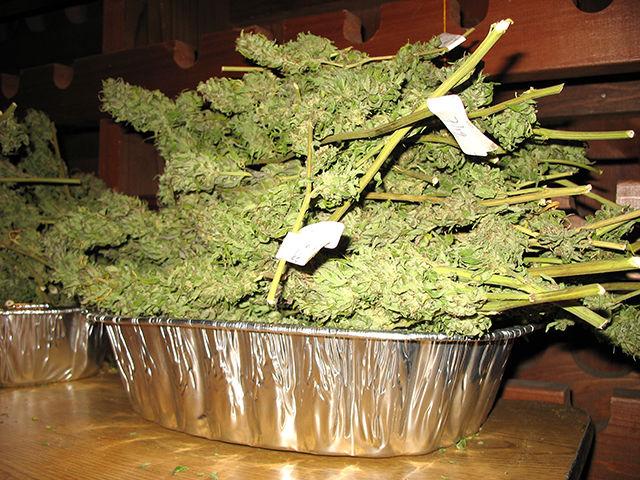Let’s talk openly and matter-of-factly about pot: Are pesticide residues on marijuana a health concern?
The truth is that we don’t know because there is virtually no research on the topic. Whether there are direct health risks posed by pesticides used in marijuana production will remain uncertain for as long as marijuana remains federally illegal. So, if you can’t bite into a fruit because of the allergic reactions that pesticides cause you or if you are looking for another argument for the legalization of your herbs, this column is for you.
Most people agree that pesticides have contributed to great gains in agricultural production and human nutrition. But while they can improve crop yield and quality of food, they also pose health risks to people — not to mention the risks they pose to the environment. If anyone needs to be aware of this fact, it should be North Carolinians. This state is third in the country in the number of pesticide-related illness and deaths, according to the Centers for Disease Control and Prevention.
When it comes to methods of marijuana production and consumption, the absence of legal clarity and guidance is particularly problematic. Unlike other conventional crops, marijuana is illegal at the federal level and is classified as a Schedule I drug along with ecstasy, heroin, LSD, peyote and methaqualone (Quaaludes.) This means there are no federal guidelines or mandates on what pesticides are allowed to be used in its production.
Theoretically, state governments are responsible for defining which and how much pesticide can be used by marijuana growers. Yet, states are hesitant to provide these guidelines as much about the technical aspects of marijuana farming remains unknown and will likely remain so as long as states are reluctant to allocate public funds to these area of research.
In general, states can only allow pesticides that are very low in toxicity in order to meet Environmental Protection Agency rules on pesticide residues. However, farmers seem to be using stronger pesticides to save their crops. The simple confusion over the legality of pesticide use has cost marijuana farmers across the country hundreds of thousands of dollars.
For example, earlier this summer, officials in Washington state halted the sale of 15 marijuana products after lab results showed these had residues of undisclosed pesticides. Also, last year, nine companies in Colorado were ordered to quarantine their plants because the Denver Department of Environmental Health found residues of Eagle 20, Mallet and Avid in their marijuana products. Were the farmers at fault? Many would argue that they weren’t.
The standard procedure for farmers caught using prohibited pesticides is that the contaminated crops are seized and destroyed. However, currently, there is no pesticide in the market that says “approved for marijuana.” That means that any grower in the country that uses some form of pesticide is at risk of having their crop confiscated. Nevertheless, Denver’s L’Eagle Services estimates that 95 percent of cultivators nationwide do use some form of pesticide. That’s a lot of burned weed just because somebody wanted to keep bugs away from their flowers.
But assuming the farmers were at fault, is it even worth it to burn all that grass in the name of toxicity prevention? How toxic is this stuff anyway?
In general, the toxicity of a pesticide depends both on its residue levels and how it is ingested. At least for the case of edible marijuana products you can count on your liver to provide some protection, but for the case of smoked marijuana, the story is very different.
A 2013 study found that up to 69.5 percent of pesticide residues can remain in smoked marijuana. However, filtering smoke through cotton can reduce the level of pesticide residues to 1-11 percent. For reference, the analogous statistic for tobacco is 1.5-15.5 percent.
Some interest groups claim that quality cannabis can be grown with organic methods. In their view, cannabis growers could lead the way in developing a truly all-natural agricultural industry. However, not using pesticides poses financial costs on producers and other types of health risks on consumers.
In the case of producers, take for example a small-scale marijuana farmer with 150 plants in Colorado. If some mildew infestation forced him to destroy a crop that would have yielded 70 pounds of cannabis, at the 2015 rate for retail marijuana, he would have easily lost $230,000. Maybe I’m just too poor, but if I were him, I think I’d spray my plants with a little Eagle 20 — particularly since there are no documents explicitly saying these chemicals pose health risks.
Regarding the case of health risks to consumers, consider that molds and bacteria can contaminate cannabis plants too. Being exposed to those pathogens can be harmful to marijuana consumers. This would be a particularly serious concern for users of medical marijuana since their immune systems are already vulnerable.
I can’t answer whether it’s safe, legal or even smart to use pesticides on marijuana. But until pot is not illegal at the federal level, I would recommend adding a filter next time you roll.















